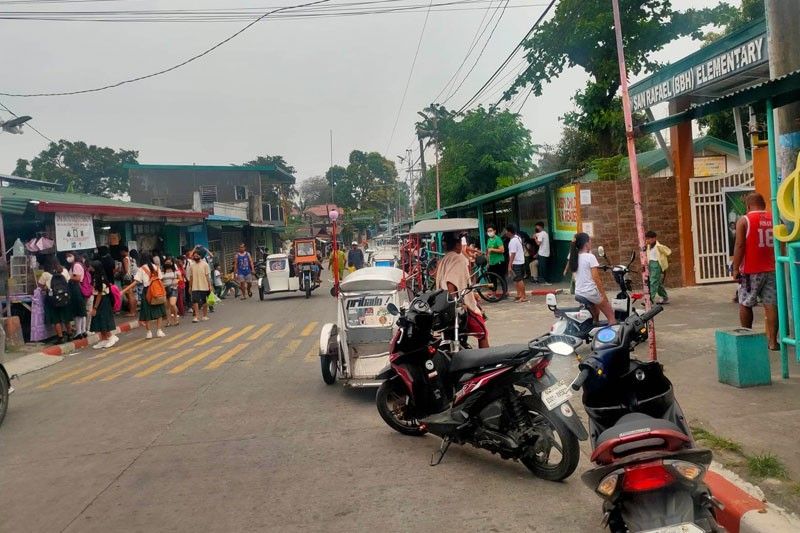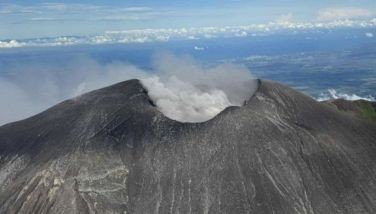Shorter classes pushed as teachers, students endure extreme heat

MANILA, Philippines — Aside from the shift to distance learning, the Teachers’ Dignity Coalition (TDC) yesterday also pushed for shortened teaching time and smaller class sizes to address the extreme heat during summer.
In a statement, TDC chairman Benjo Basas acknowledged a recent memorandum issued by the Department of Education (DepEd), which reiterated its policy of suspending in-person classes during unfavorable weather conditions.
While the TDC supports the call for the return to the old school calendar, when the school break coincides with the hottest months of April and May, Basas said it would take at least four years to gradually do so.
An immediate shift to the old calendar, he pointed out, could affect the two-month break of teachers and students.
“For now, the alternative methods that can be used are shortened teaching time and modular and online learning,” Basas said.
“A more strategic approach is needed, for example, a class size of no more than 25 students, more stable classrooms designed for student comfort and provision of electric fans or even air-conditioning system. Certainly, we will need funds and policies to implement such,” he added.
Amid new concerns over extreme heat in areas experiencing blackouts, DepEd spokesman Michael Poa said that a shift to alternative delivery modes (ADM), such as modular distance learning, is within the authority and discretion of the school heads.
“For as long as it is determined by our school heads that the school environment is no longer conducive for our learners and personnel, they may suspend in-person classes and immediately switch to ADM,” he added.
In an office memorandum on Thursday, DepEd Assistant Secretary for operations Francis Cesar Bringas reminded school heads of their authority “to suspend in-person classes and implement modular distance learning in cases of unfavorable weather and environment such as, but not limited to, extremely high temperatures which may considerably affect the conduct of classroom learning and put the learners’ health and wellbeing at risk.”
Poa earlier confirmed that a group will be formed to study proposals to revert the schedule of the school break to the months of April and May.
Earlier this month, the Alliance of Concerned Teachers (ACT) proposed the gradual return to the previous schedule by limiting the number of class days to 185 from the more than 200 days this school year.
Under its proposal, classes would open on Aug. 14 this year, July 29 in 2024, July 7 in 2025 and June 15 in 2026.
The DepEd has set the opening of the next two school years in August 2023 and 2024.
Higher heat index
An official of the Philippine Atmospheric, Geophysical and Astronomical Services Administration (PAGASA) on Friday warned that a higher heat index is expected in May amid the dry season.
During the Laging Handa press briefing, PAGASA Impact Assessment and Applications Section of the Climatology and Agrometeorology division chief Marcelino Villafuerte II recalled that the highest heat index in the country reached 55 degrees Celsius and was recorded in Dagupan City on May 1, 2022.
“We expect that during the month of May, that’s the time we record a higher heat index,” Villafuerte said.
“We expect this to persist in May, as during this month the relative humidity is high, as well as the temperature,” Villafuerte added.
On the other hand, he said that strong typhoons are also expected even during the El Niño phenomenon.
“Typically, when there is El Niño, based on our records, there are fewer tropical cyclones, but stronger typhoons as their distance from the Pacific Ocean is far. They collect more energy from the high sea surface temperature. So, if this is the case, stronger typhoons are expected,” Villafuerte explained.
At the same time, he said the effect of El Niño could be severe by next year as the country could expect less typhoons.
“Even if there is El Niño, we expect rains, but fewer compared to the average during the normal years. Typically, the effect of the El Niño could be felt the following year, the first season of the following year,” Villafuerte noted.
According to him, the severe effect of the drought will start in December 2023 until April 2024.
Based on the five-day forecast for heat index, PAGASA projected that at least 51 degrees Celsius could be felt in Catbalogan, Samar on April 25.
The state agency said that the heat index at the Science Garden in Quezon City could reach 50 degrees Celsius on April 23.
According to the weather bureau, a heat index of 49 degrees Celsius is expected at Central Luzon State University (CLSU) in Muñoz City, Nueva Ecija on April 23.
It added that today, heat index of more than 40 degrees Celsius could be felt in Catbalogan, with 48 degrees Celsius; CLSU and Coron, Palawan, 44 degrees Celsius; Catarman, Northern Samar, Clark, Pampanga, Tacloban City, Tuguegarao City, 43 degrees Celsius; Ninoy Aquino International Airport (NAIA), Pasay City, Cabanatuan City, Puerto Princesa, Palawan and Surigao, 42 degrees Celsius.
Tomorrow the heat index in Butuan City could reach 46 degrees Celsius; Tacloban City, 43 degrees Celsius; Daet, Camarines Sur and Tagbilaran, Bohol, 42 degrees Celsius.
The state agency added that on April 24, high index is expected in Clark, with 45 degrees Celsius; CLSU, 44 degrees Celsius: Catbalogan, 43 degrees Celsius; Cabanatuan, Catarman, Daet, General Santos City, and Subic, Zambales, 42 degrees Celsius.
On April 25, the heat index in Tacloban could also reach 43 degrees Celsius.
The highest heat index yesterday was recorded in Dagupan City and NAIA with 43 degrees Celsius.
Other areas with high heat index were Butuan City, Agusan del Norte, Masbate City, Masbate and Zamboanga City with 42 degrees Celsius.
The highest heat index recorded from March 1 to April 19 was 47 degrees Celsius in San Jose, Occidental Mindoro and Butuan City, Agusan del Norte.
The weather bureau defines heat index as a measure of how hot it really feels outside, when humidity and other factors are considered along with the temperature. — Rudy Santos
- Latest
- Trending































